Campo del Moro is much more than just a garden: it is a green space where art, history and nature coexist in harmony. Very often when we decide to stroll along a park in Madrid, it is because we want to relax and unwind. But, what if we can do this and at the same time enjoy a park full of the living history of Madrid? We can experience this in Campo del Moro, which was declared to be of Historic-Artistic interest in 1931.
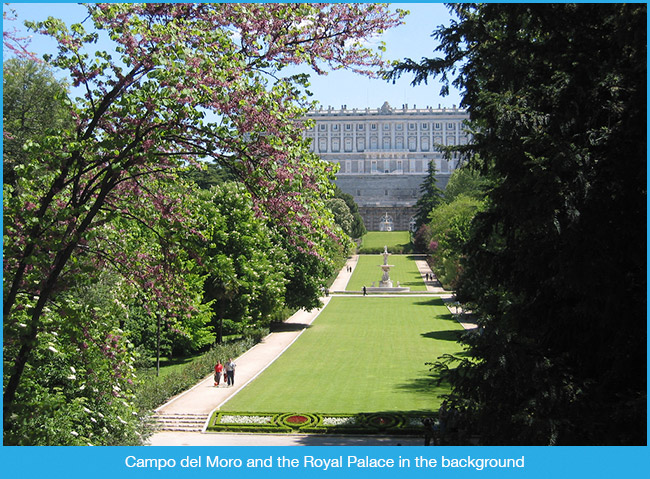
This beautiful place, which is one of the three gardens of the Royal Palace, is located on the banks of the Río Manzanares. Even though it was first planned in 1844, nowadays it is completely different from the initial design of the architect. Why? Where does the name come from? How many hidden paths does it have? Today we will tell you about it whilst we walk along Campo del Moro which is worthwhile visiting calmly. In our section Corners of Madrid, we previously wrote about 81,Castellana.
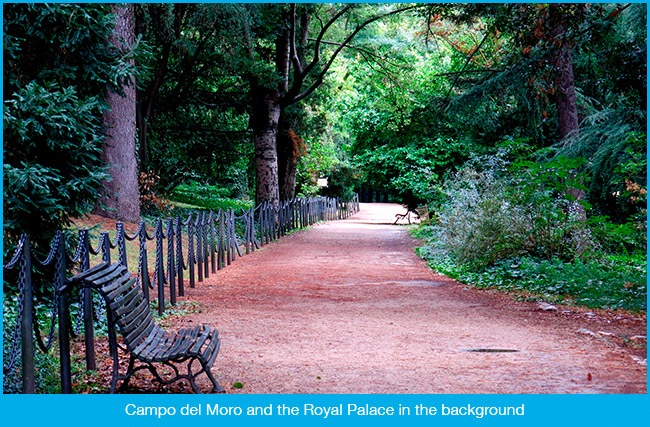
THE LUNGS OF THE RIO MANZANARES
Campo del Moro comprises 20 hectares of land and it was designed by the architect Narciso Pascual y Colomer in the XIX century. It is located on a difficult plot of land because the design had to overcome the very steep drop between the Río Manzanares and the Royal Palace.
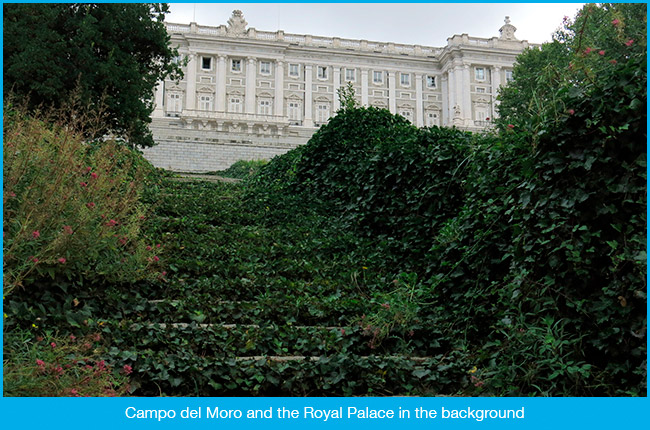
We must point out that before the construction of the Royal Palace, there had been several attempts to landscape the area. Hardly any of them were successful. Nevertheless, in 1810, Juan de Villanueva achieved it. However, the structure and the design were completely remodelled by Pascual y Colomer, the architect who also designed Plaza de Oriente.
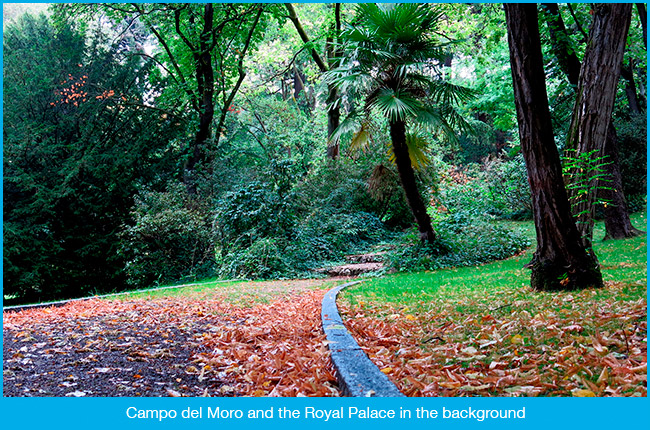
Funnily enough, in order to level the ground, pieces of rubble which came from the churches and the houses which had been demolished so as to widen Puerta del Sol, were used. The name of the garden, Campo del Moro, stems from the historic time when Ali Ben Yusuf attacked Madrid in 1109 in order to try to recover Toledo. The Muslim troops set up camp there and that is why the garden is called Campo del Moro.
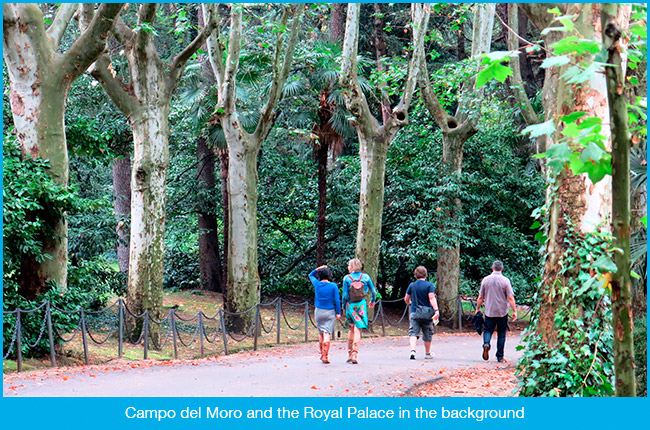
A GARDEN WITH MANY DIFFERENT STYLES
Pascual y Colomer made a formal design of the garden. Two large fountains were erected, Fuente de las Conchas and Fuente de los Tritones, as well as a main promenade. Unfortunately, the architect never saw his work finished because everything had to be stopped during the 1868 revolution.
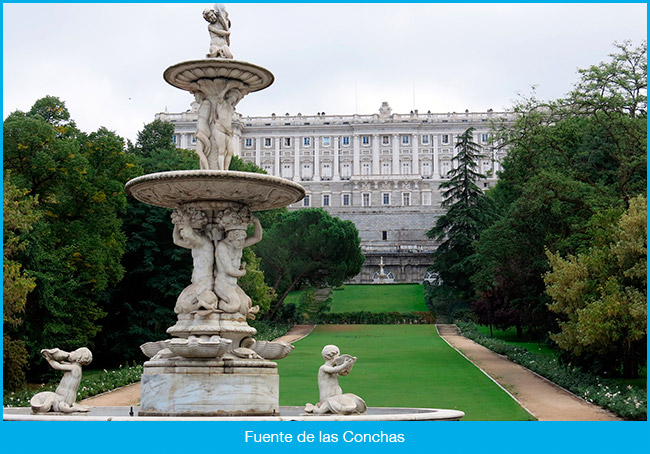
At the end of the century, the architect Ramón Oliva took up again the project but he moved towards a naturalist and romantic style. Ramón Oliva had nearly 10.000 trees and more than 20.000 bushes planted. We must highlight that among them, there were 400 palm trees and more than 12.000 rosebushes. He also designed hidden paths such as the Cadenas and the Cuatro Llaves.
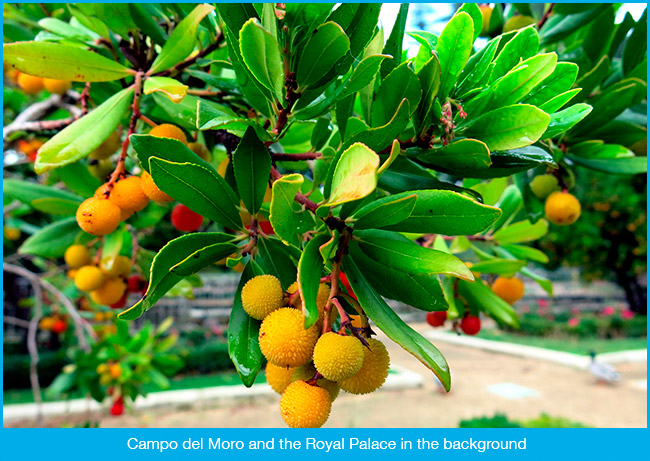
In 1898, Enrique María Repullés added wooden Tyrolean cottages which created a stronger mix of styles in the garden.
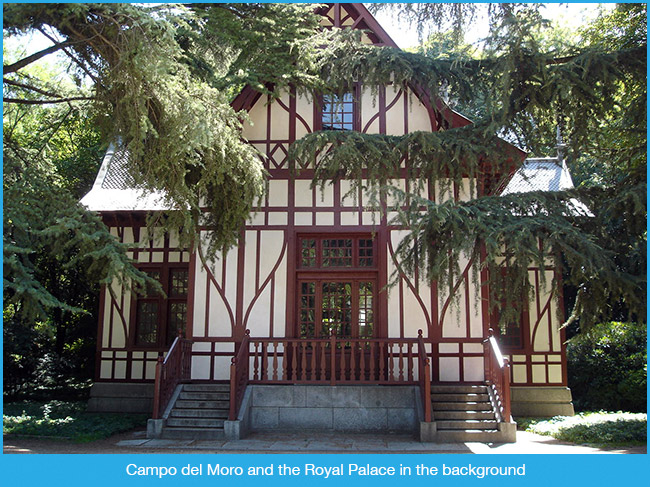
In spite of the fact that Campo del Moro is not an homogeneous garden, we believe that precisely because of that, it is an attractive place where you can enjoy different architectural styles which were the result of several historic times. For instance, we are impressed by the small cork bark cottage built in the middle of the XIX century and which coexists with the rest.
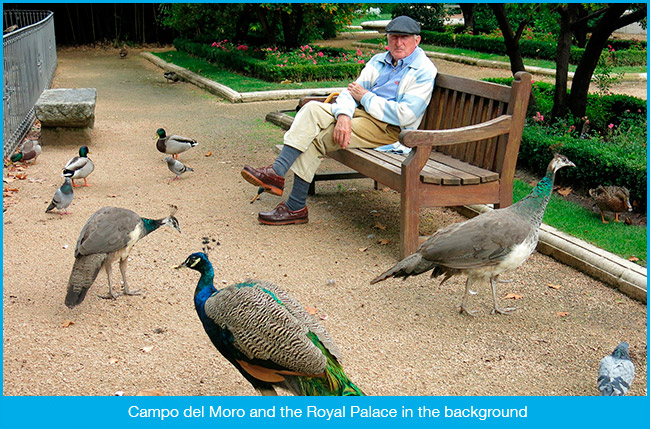
DID YOU KNOW THAT…?
In 1810, Juan de Villanueva built an artificial passage called Túnel de Bonaparte which connected the Royal Palace with the gardens of the Casa de Campo. One part of this passage was located in Campo del Moro and it can still be seen nowadays.
Pictures 01, 02, 03, 04, 05, 06, 07 and 09: Manuel
Picture 08: losmininos


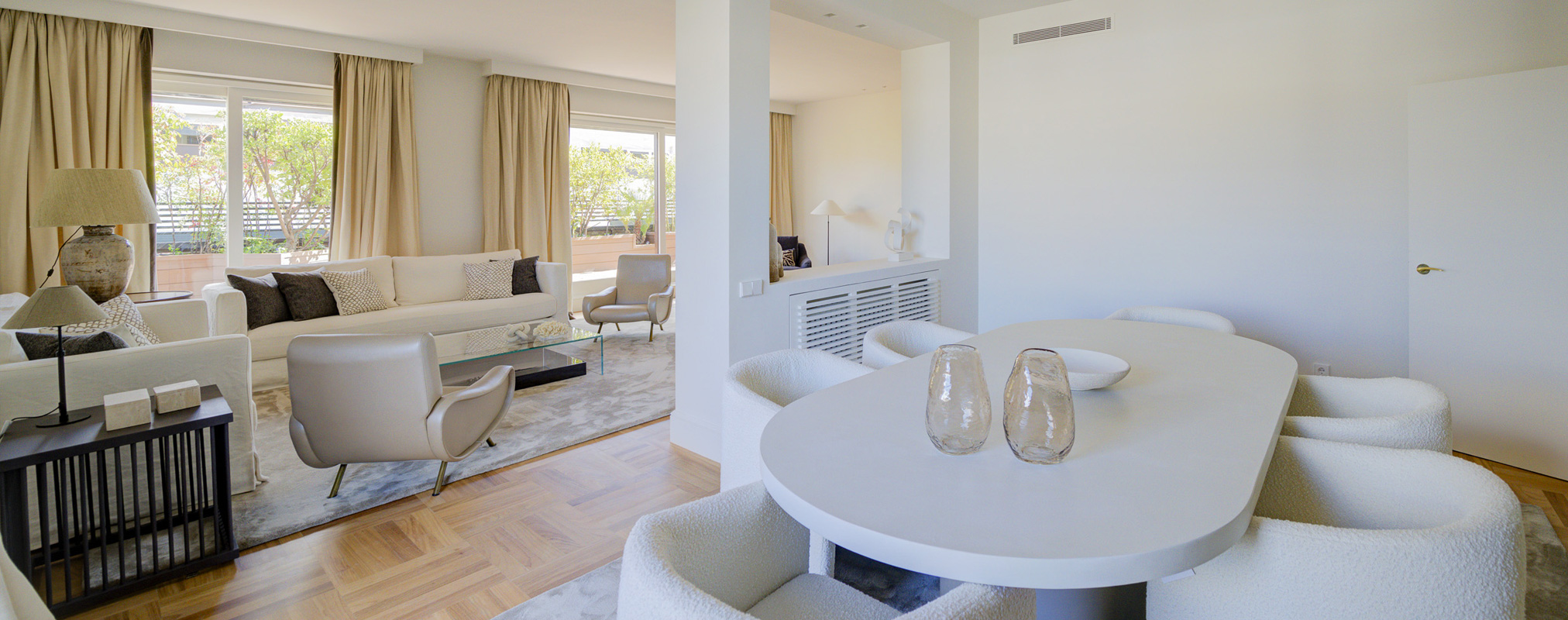
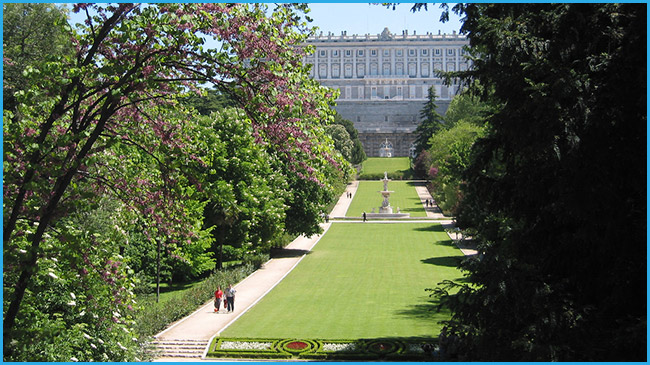
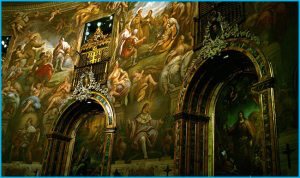
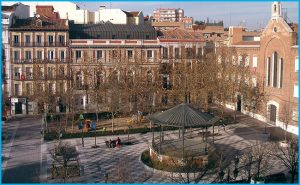
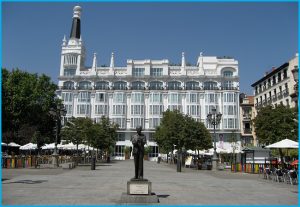
 Spanish
Spanish English
English
Comments
Pingback: Casa de las Flores - Blog, dulce blog